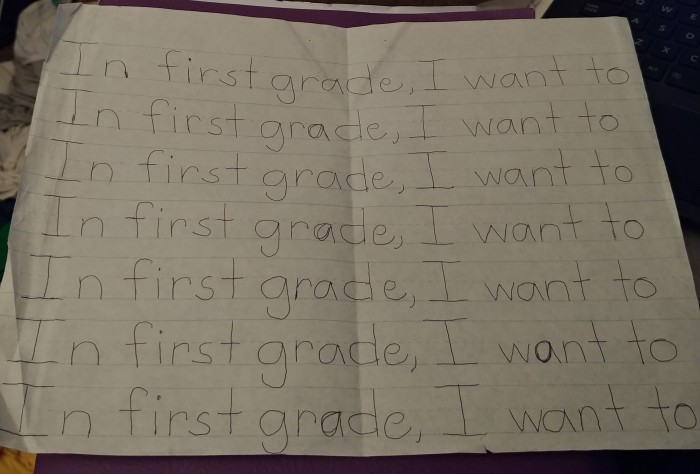The teacher understands the central concepts, tools of inquiry, and structures of the discipline(s) he or she teaches and creates learning experiences that make these aspects of the discipline accessible and meaningful for learners to assure mastery of content.
My education professor from Camden County College used to tell me that when one applies for a teaching job, the school in which one applies is looking for teachers who know their content. Teachers must know their content because they are the ones passing on their knowledge to the students. One must know what he or she is teaching. If the teacher does not know his or her content, the students will not know the content because the teacher taught it incorrectly. Schools want students to be taught the correct information, and they need competent teachers who know their content to do it. The secondary school teacher must teach one content area in which they are responsible to have a wealth of knowledge. An elementary school teacher focuses on more content than a secondary teacher, but they only need general knowledge about the subjects they teach. Sometimes, an elementary school teacher in the upper-elementary grades may only be responsible for one or two content areas, but they are still expected to have a wealth of knowledge in that content area because that content area is the area in which the teacher is an expert. Whatever content a teacher is responsible for teaching, the teacher must have enough knowledge to pass onto their students.

As a teacher, one must have a skill that one never thought one could have. In the primary grades, there is such an emphasis on printing to make sure they print well in the future. My first artifact is a paper in which I had to practice my printing. I had previously taught a lesson in which my sloppy handwriting showed on the SMART Board in front of the students. My cooperating teacher told me that I must work on my printing because if a teacher assesses a student’s printing without having neat printing oneself, parents will notice this. I wanted to make my writing neat enough so when I teach the next lesson in which I have to display my writing, it would look presentable. I taught a lesson on working hard to achieve a goal, so I had them make posters saying what they wanted to work hard for in first grade. On the paper, I have, “In first grade, I want to” written on the paper over and over to practice when I showed the students what to write on the paper. I chose this artifact because it shows how a teacher may sometimes have to prefect a skill in which he or she feels incompetent. I had to practice my printing to show that I was knowledgeable in printing, but I needed practice to make it look more appropriate to show students how they should print. After all, if I do not know how to print neatly, my students will also think it is okay for their handwriting to be illegible. This artifact is so significant because it shows a teacher working on her skills, so her students will hopefully learn those same skills. It shows that teachers must understand their content to pass onto their students. I want my students in the first-grade to have better handwriting; therefore, I need to work on my handwriting. I arrived at the decision to use this as my artifact because it shows just how teachers should hold themselves responsible for content whether it is taught directly or indirectly. When I practiced the printing, it was not even for a printing lesson. It was for what I showed them for what I wanted them to write on a poster. Still, it teaches children that if the teacher has nice printing, they should have nice printing as well.
Vocabulary Sheet for Multi-Digit Multiplication Unit
One of the most important parts of a teacher knowing his or her content is for the teacher to know content specific vocabulary. This second artifact is a vocabulary sheet that is used to help my students know the vocabulary necessary for them to understand the content being taught. During my student teaching, my cooperating teachers would tell me to make sure I use content specific vocabulary while teaching. Also, she told me to make sure I introduced the vocabulary before a math lesson. This vocabulary sheet is how I introduce vocabulary in math before beginning a lesson. The vocabulary I introduce each day is listed under the lesson number that is being taught on that day. I chose this artifact because it shows that I came up with a system that allows me to teach the content specific vocabulary to my students to show that I know my content. That way, my students have something to help them study the content specific vocabulary I have taught them. Also, my students will know the content I am teaching them by looking at this handout. This artifact connects to this standard because it shows that I am using the academic language associated with multi-digit multiplication or any other unit of math I teach. Furthermore, I make sure that my students have the academic language and key ideas so that they know that academic language when I am teaching. If the student knows the academic language, he or she will understand the content being taught better. It is up to the teacher to reinforce that academic language throughout the lesson so that it has meaning to the students.
